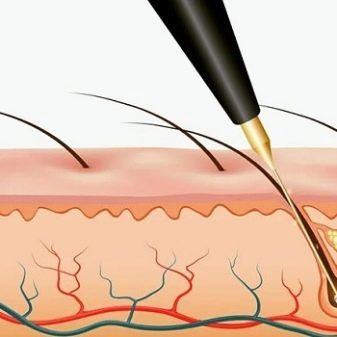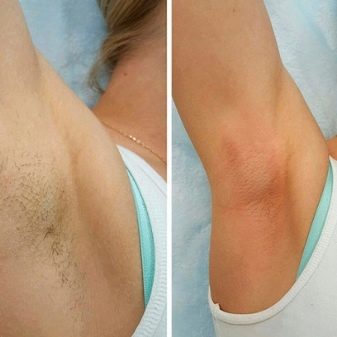Which is better: laser hair removal or electrolysis?

In the modern world, there are many procedures and technologies for achieving smooth skin, but most of them have only a temporary effect for a short time, so they must be repeated after a few weeks. Fortunately, there are ways to remove hair for a long time, and in some cases even permanently.
We are talking about laser procedure and electrolysis. But before making a choice in favor of one of them, it is recommended to consider all the features, carefully study the differences and effectiveness, and also familiarize yourself with the possible contraindications and consequences.


Safety of procedures
The main feature of these types of hair removal is that in both cases, the effect on the skin is performed in ways that are unusual for us. In the case of laser hair removal, hair removal occurs by destroying the hair follicles from the inside. The melanin contained in the hair structure begins to heat up under the influence of the laser beam, which leads to the destruction and subsequent hair loss.
The laser hair removal procedure, although it has been carried out for several decades and is considered completely safe, still has some contraindications that must be taken into account:
- the procedure is not recommended during pregnancy and lactation, as this can harm the body of the mother and baby;
- with varicose veins, laser exposure can also be a health hazard;
- contraindications include malignant neoplasms and oncological diseases;
- laser exposure can worsen the condition in acute viral diseases;
- it is also recommended to refuse the procedure for people with cardiovascular diseases and diabetes mellitus.


The procedure for electrolysis is carried out in other ways - a thin needle penetrates under the skin, directly to the follicle, which is also an electrode, then, by supplying a low-purity current, heating and destruction of the structure of the hair follicle occurs. This procedure began to be carried out much earlier than laser hair removal and is also considered harmless for people without health problems. As in the case of the previous procedure, there are a number of contraindications, which include all of the above points and some more nuances.
- If a pacemaker is installed, the procedure is not possible.
- It is also strictly forbidden to carry out electrolysis if there are any metal objects in the human body, whether they are implants or prostheses.
- If you have hepatitis, this type of hair removal should be abandoned.
- Individual allergic reaction to the components of the procedure. For example, intolerance to metal alloys from which needles for hair removal are made.
It should also be borne in mind that laser hair removal is less painful than hair removal using low-frequency current. Therefore, people with high sensitivity are better off opting for the first option.


What is more efficient?
Since each of the procedures has its own nuances, advantages and disadvantages, it is impossible to categorically indicate that one is more effective than the other. When choosing a procedure, it is necessary to take into account all factors in general, as well as the final effect that you want to achieve. To better understand the features of the effect of these procedures, it is recommended to consider the advantages and disadvantages of each separately and compare them.
The important nuances of laser hair removal are as follows.
- The laser does not permanently remove hair. It only reduces the amount and significantly slows down hair growth, but the procedure will have to be repeated anyway.
- Laser hair removal is most effective on dark hair, the structure of which contains the greatest amount of melanin. Working with fine blond hair can be completely useless.
- When a laser beam interacts with a tanned skin, unpleasant and sometimes dangerous health effects can occur.
- The duration of the procedure is only a few minutes, which significantly saves you time.
- For a full course, it may take about 10 sessions, depending on the individual reaction of the skin and hair.
The following conclusions can be drawn regarding the effect of electrolysis.
- With the correct implementation of the full course, you can permanently get rid of hair in unwanted places.
- To achieve the best effect, you will have to spend a lot of time. One session of the procedure can take several hours.
- Electrolysis will be effective regardless of hair color.
- A full course may take up to 6 long sessions.


How else is laser hair removal different from electrolysis?
In addition to all of the above, there are many other features that will help you decide in favor of any of these procedures. To compare and get a complete understanding of these procedures, it is necessary to consider a few of the most important characteristics and features.
Duration of the course
The duration of the course of both laser hair removal and electrolysis largely depends on the individual characteristics of the organism and the appearance of each person. For example, more sessions will be needed to remove thick hair. Let's take a closer look at how long an epilation course can take, and what factors affect it.
As noted earlier, the average duration of a laser hair removal course is about 10 sessions, and taking into account that the break between sessions should be at least 1 month, the full course can take a whole year. With high-quality laser hair removal, the growth of new hair is observed after 3-5 years, but since the hairs become thinner, softer and more pliable, it should be expected that the repeated course will take much less time.
The average interval between electrolysis procedures should be at least 2 months, which means that even with a smaller number of sessions, the full course can also take 1-1.5 years.
The only difference is that with the normal functioning of the hormonal background, a repetition of the course is not required.


Exposure to open sunlight
To avoid dangerous health consequences, it is necessary to study such factors as the effect of ultraviolet radiation on the treated skin. This is a very important nuance, since direct sunlight can already be harmful to the skin, and in conjunction with the thermal effect on the follicles, the consequences may even be unforeseen.
It is not recommended to sunbathe for at least 2-3 weeks before laser hair removal. The same recommendations should be followed after the procedure, and, if possible, it is better to extend the period of abstinence from sunbathing up to one and a half months. Therefore, you should refrain from laser hair removal before vacation or during hot summer periods. It will be possible to return to the procedure with the onset of coolness, when the areas of the treated skin will not be in direct contact with the burning rays of ultraviolet radiation.
Electrolysis allows the procedure to be carried out on skin with a fresh tan, but after it, you should also refrain from contact with direct sunlight for a couple of weeks. The thing is that after hair removal by this method, crusts form on the skin, and the effect of ultraviolet radiation can have a negative effect on their healing. Once the crusts have peeled off, you can go back to getting your chocolate skin tone or go on vacation.


Skin appearance after the procedure
Coming to procedures of this kind, every girl wants to know how her skin will look after, fearing irritation, allergic reactions and other unpleasant consequences. Often, ideal smoothness occurs only a few days after the final completion of the course, when the skin calms down, but in some cases it may take more time. As previously noted, after electrolysis, small crusts remain on the skin - these are microburns, the appearance of which is triggered by exposure to current. For several weeks, they will stick to the skin, gradually disappearing, and only when the crusts completely disappear, you can get what you want - perfectly smooth skin.
After the laser hair removal procedure, the consequences on the skin surface are minimal - slight redness and slight irritation in the form of skin rashes may occur. All this is a natural reaction of the skin to interaction with a laser beam, it goes away rather quickly - after just a few days. The skin treated with laser hair removal retains its smoothness for a long time, but as a result, the hairs will begin to germinate again, albeit in a smaller amount. It is also worth noting that the further condition of the skin after such procedures may directly depend on the quality of the equipment and the professional skills of the master.
It is not uncommon for the consequences of various types of hair removal to permanently leave marks on the skin due to insufficient specialist qualifications, safety violations or the operation of faulty equipment.


What is the best choice?
When choosing one of these two procedures, it is necessary to take into account many factors that play a very important role and can affect not only the result, but also the process itself. To make the right and safe choice for yourself, you need to consider the following points.
- In the absence of any restrictions on health, it is worth focusing on the result that you would like to get. Only electrolysis will help to get rid of unwanted vegetation forever; with laser technology, the procedure will have to be carried out at regular intervals.
- Skin sensitivity can be a serious obstacle to hair removal by current. In the case of a strong intolerance to pain, it is better to opt for laser hair removal. So the procedure will be less traumatic and more comfortable.
- Owners of a fresh tan, as well as blond hair, should choose the electrolysis procedure, since laser hair removal in these cases may be ineffective or simply unacceptable.
- Both procedures have a very tangible cost, therefore, when choosing, it is also necessary to take into account this side of the issue. But if laser hair removal requires regular funding, then the procedure for hair removal with electric shocks can be considered as a one-time investment, which is much more profitable.
- You also need to take into account the time that you are willing to spend on one procedure. Often, in the bustle of the modern world, girls prefer those types of hair removal that take the least amount of time.










